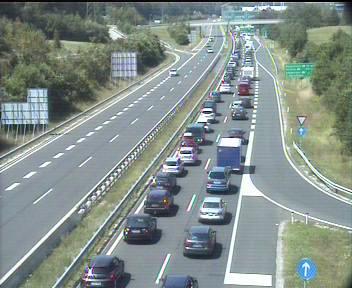
According to Slovenia’s Traffic Information Centre (PIC) there will be heavier traffic on roads and highways this year compared to previous years. The number of foreign cars on roads increases by the year, which is why planning your trip prior to departure is crucial. "You need to know where you’re going and do try to find alternative routes. If you are travelling by car, take a map or a road map with you, and check all the possibilities of how to react in case you, for example, get stuck in a traffic jam," suggests Brane Nastran, the head of PIC.
In the past the rule was to start off as early in the morning as possible. "In principle, starting off early is still good. However, that does not apply to every day and every weekend," explains Nastran, pointing out the observations of the Traffic Information Centre, where they monitor the volume of motor traffic every weekend. In the summer, traffic congestions regularly occur on Friday afternoons, Saturday mornings and afternoons, but traffic can also be dense on Sundays all day.
Even though the weekend closest to the 1st of August will still be the most crowded with cars, the habits of Western tourists have changed. "They shortened their main holiday and instead head to the seaside twice. The 15th of August will be one such example of an extended weekend, and that is when we expect increased traffic in both directions. Some will set off on a long weekend holiday, while others will be going home," says Nastran. He adds that in the past year the number of tourists heading for Croatia’s or Slovenia’s seaside by car increased by 15%. A reason for this is that these destinations are close, reliable and safe. And this is why traffic this year is expected to increase in comparison with previous years. Traffic jams on roads heading towards the coast and at the border crossings are expected to be heavier than in previous years.
Traffic jams in the opposite direction at the end of August and in September
According to the Traffic Information Centre, big congestions coming from the direction of the coast towards the inland can be expected in mid-August and the last week of August. Congestions can also be expected during the first two weeks of September when the summer holidays come to an end in most parts of Germany. "Long queues are expected before the Karavanke border tunnel and partly also at the Šentilj border crossing, where there are usually 10 kilometer-long tailbacks of traffic. On top of that, the Austrians said they will introduce border checks, which will cause even further delays," adds Nastran.
Gregor Prebil; translated by K. J.

































































